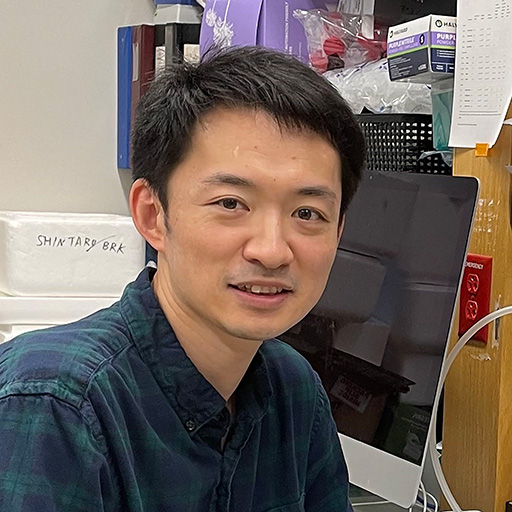Age-Related Microglia-RPE Interactions in AMD Pathogenesis

About the Research Project
Program
Award Type
Standard
Award Amount
$100,000
Active Dates
April 01, 2010 - March 31, 2013
Grant ID
M2010086
Co-Principal Investigator(s)
Lian Zhao, MD, National Eye Institute
Goals
This proposal tests the hypothesis that cellular interactions between retinal microglia and retinal pigmented epithelial (RPE) cells in the context of aging induce cellular changes at the retinochoroidal interface that promote the progression and advancement of AMD. Elucidating what intercellular communications drive disease pathogenesis will clarify the cell biology of AMD and may discover therapeutic targets for treatment and prevention.
Summary
At present, knowledge of what causes age-related macular degeneration (AMD) is still incomplete, and as a result, treatments available to prevent and repair vision loss from AMD are still imperfect. Recent studies have discovered that aging as well as the immune system are both important in the development of AMD. In our research, we aim to find out how immune cells in the retina, called microglia, change with aging. We also aim to discover how microglia contribute to changes in other important cells in the retina affected in AMD. In particular, we will examine how microglia influence the retinal pigment epithelium (RPE), a vital layer of cells altered in “dry” AMD. Also, we will examine how these influences contribute to the growth of aberrant vessels into the retina, the cause of vision loss in wet AMD.
At the conclusion of our study, we will be able to obtain important information about how cells interact within the retina to cause the changes seen in AMD. On a scientific level, this will help vision scientists better comprehend how different parts of the retina work together and how they go awry in disease. On a practical level, understanding these interactions may provide opportunities to therapeutically intervene and control the cellular events driving AMD, achieving effective prevention and treatment of vision loss from AMD.
In our study, we first aim to examine how microglia in the retina undergo aging-related changes in ways that may help us understand how they may drive AMD. Specifically, we are looking carefully at how microglia, as a function of age, produce factors previously thought important in AMD and change their ability to move to areas affected by AMD. Next, using purified cells in a culture dish, we will examine the interactions between microglia and RPE cells when they are placed next to each other. We will ask if the union of these two cell types results in the production of factors that are thought to be important in driving AMD. Finally, we will use an experimental mouse model to simulate the union of microglia and RPE cells, a situation also seen in human AMD. By transplanting microglia next to the RPE cell layer in a living organism, we hope to understand how microglia interact with RPE cells in the retinas of patients with AMD.
In the course of our study, we will employ innovative techniques in cell culture, cell imaging, and cell transplantation to study AMD. Our proposal also directly addresses the question of how biological aging and how changes in the immune system, two important factors in AMD, combine to drive disease. Lessons learned in our proposal have the potential to be translated into novel therapies for AMD prevention and treatment.
Progress Updates
Dr. Wong’s and Dr. Zhao’s team is trying to understand how the immune cells that normally reside in the retina undergo aging changes. As AMD is an aging disease that involves immune reactions in the retina, finding out about how retinal immune cells age could illuminate important aspects about AMD biology.
In the first year of this project, the team discovered that retinal microglia do undergo significant and interesting aging changes. They discovered that young and aged retinal microglia differ significantly in their cell shape and their distribution within the retina. Also, they found that young and aged microglia respond differently to injury and injury signals. These differences indicate a decreased capacity of aged microglia to carry out dynamic functions in the retina under normal conditions. The differences also reflect a dysfunctional response to injury that is less prominent and rapid in the acute post-injury phase, but is more prolonged and sustained in the chronic phase. These findings were published recently in the leading journal on aging science, called Aging Cell.
In the second year of this project, the team has studied microglia changes in response to accumulation of A2E, an autofluorescent substance that they believe builds up in immune cells as they age. They found that when immune cells accumulate A2E they become altered in their properties in ways that promote inflammation and decrease their ability to protect the retina. These findings were published recently in another leading journal on aging science, called Neurobiology of Aging.
These data provide a cellular basis for understanding how the immune system in the retina functions differently between young and aged mice, and raise hypotheses about how these may be related to the occurrence of AMD in humans as their retinas age.
Grants
Related Grants
Macular Degeneration Research
The Novel Role of an Intracellular Nuclear Receptor in AMD Pathogenesis
Active Dates
July 01, 2024 - June 30, 2026

Principal Investigator
Neetu Kushwah, PhD
Current Organization
Boston Children’s Hospital
Macular Degeneration Research
Exploring How NRF2 Protein Reduces RPE Cell Damage by Cigarette Smoke
Active Dates
July 01, 2024 - June 30, 2026

Principal Investigator
Krishna Singh, PhD
Current Organization
Johns Hopkins University School of Medicine
Macular Degeneration Research
The Development of a Transplant-Independent Therapy for RPE Dysfunction
Active Dates
July 01, 2024 - June 30, 2026

Principal Investigator
Shintaro Shirahama, MD, PhD
Current Organization
Schepens Eye Research Institute of Massachusetts Eye and Ear



